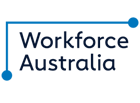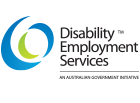
Unconscious biases are judgements and opinions that are subconsciously built up over a lifetime. Unfortunately, they have the power to negatively influence the recruitment process and dissuade employers from choosing the best person for the position.
This issue affects a wide range of demographics including those living with disability who have been subject to a significant and persistent gap in employment over the past three decades[1], says Debbie Brooks National Diversity Employer Manager, atWork Australia:
“In my experience, business leaders want to create open and inclusive workplaces and simply want to find the right person for the job. Unfortunately, the data indicates1 that this simply isn’t happening, as those with disability are less likely to land a job than the average Australian. As such, we see unconscious bias playing an underlying role in recruitment choices.”
While unconscious biases can be damaging, it is important to understand that they are not malicious in their intent, continues Debbie: “Unconscious biases are social stereotypes that we all create to help us to understand and categorise the world around us, based on our past experiences. They are useful when they work, but can be detrimental if not properly scrutinised.
“In terms of disability, this could be an unconscious assumption that it will be harder to work with someone with disability, where in fact data shows, that in nine out of 10 cases (90%)[i], employees with disability, injury or health condition are as, or more, productive than their peers and almost the same number (86%)[ii] show superior attendance. What’s more, they generate less turnover and fewer workplace injuries than other workers[iii].”
With the current unemployment rate rising and companies receiving higher volumes of applications for job vacancies, it’s critical that employers remain open-minded, particularly when reviewing applications and CVs to avoid limiting their accessing a broader talent pool. To address unconscious bias, companies must proactively take a structured approach to recruitment that utilises all available information on candidates and avoids ill-informed snap decisions being made.
“Training in disability awareness is a great first step to unravelling unconscious bias because it not only allows you to realise that everyone possesses unconscious biases but assists you to identify your own,” says Debbie.
Tools such as atWork Australia’s recently launched disability awareness online training, empowers businesses to build a more accessible and inclusive workplace and confidently support their employees with disability. It provides employers with practical tools and strategies to gain a deeper understanding of how to attract, recruit, and support a diverse workforce. The sessions include an interactive Q&A webinar, and cover topics such as enhancing awareness and knowledge of disability, challenging attitudes, gaining practical tools and strategies to make the workplace accessible to all.
Debbie suggests employers adopt the following strategies to remove unconscious bias from the recruitment process:
Make data driven decisions
Making decisions based on fact and data, and not personal opinion is vital. Reconsider the rationale behind an initial decision to establish if all facts were considered or if biases have crept in.
Standardise the interview process
Structure interviews, so candidates are asked the same set of questions to minimise biases and focus on the factors that matter to the role. Not having a standardised approach during an interview can lead to a preference for people within your own demographics and not necessarily the best person for the job.
Remove Gendered Wording
With recent years showing only 49% of women with disability participating in the labour force, compared to 57% for men with disability[2], deep rooted beliefs about gender roles and stereotypes are still prevalent. Employers need to encourage more females to apply, which can be done by writing gender-neutral job vacancies, removing gender specific job titles and any masculine words such as ‘manpower’.
Build an interview panel
Involve other team members in the interview process so there are varied perspectives. This can be very powerful in preventing one another’s unconscious biases from rising to the surface, and to keep an open mind in the recruitment process.
Change up the processes
Blind interviews for instance, are a great example of removing identifying information from job applications, such as name, gender, age, disability, and even schools, in favour of focusing on skills, abilities and experience alone.
“Hitting diversity goals improves productivity and performance. Working with a DES provider can assist in overcoming unconscious biases to reach this target while saving valuable time in the recruitment process, as we pre-screen candidates to ensure the right fit for the business and job role, as well as offer our Disability Awareness Training to employers who request it,” concludes Debbie.
For more information about atWork Australia, assistance in the recruitment process, and how it can support employers, please visit: https://www.atworkaustralia.com.au/recruiting-people-with-disability/
For more information about atWork Australia’s Disability Awareness Training, please visit: https://www.atworkaustralia.com.au/dat/
[1] https://www.dca.org.au/sites/default/files/dca_submission_-_willing_to_work.pdf
[2] https://www.dca.org.au/sites/default/files/dca_submission_-_willing_to_work.pdf
[i] Visit www.jobaccess.gov.au for more information
[ii] https://www.comcare.gov.au/__data/assets/pdf_file/0003/127425/Disability_in_the_workplace_PDF,_71.9_KB.pdf
[iii] Australian Network on Disability: Business benefits of hiring people with disability https://www.and.org.au/pages/business-benefits-of-hiring-people-with-a-disability.html


